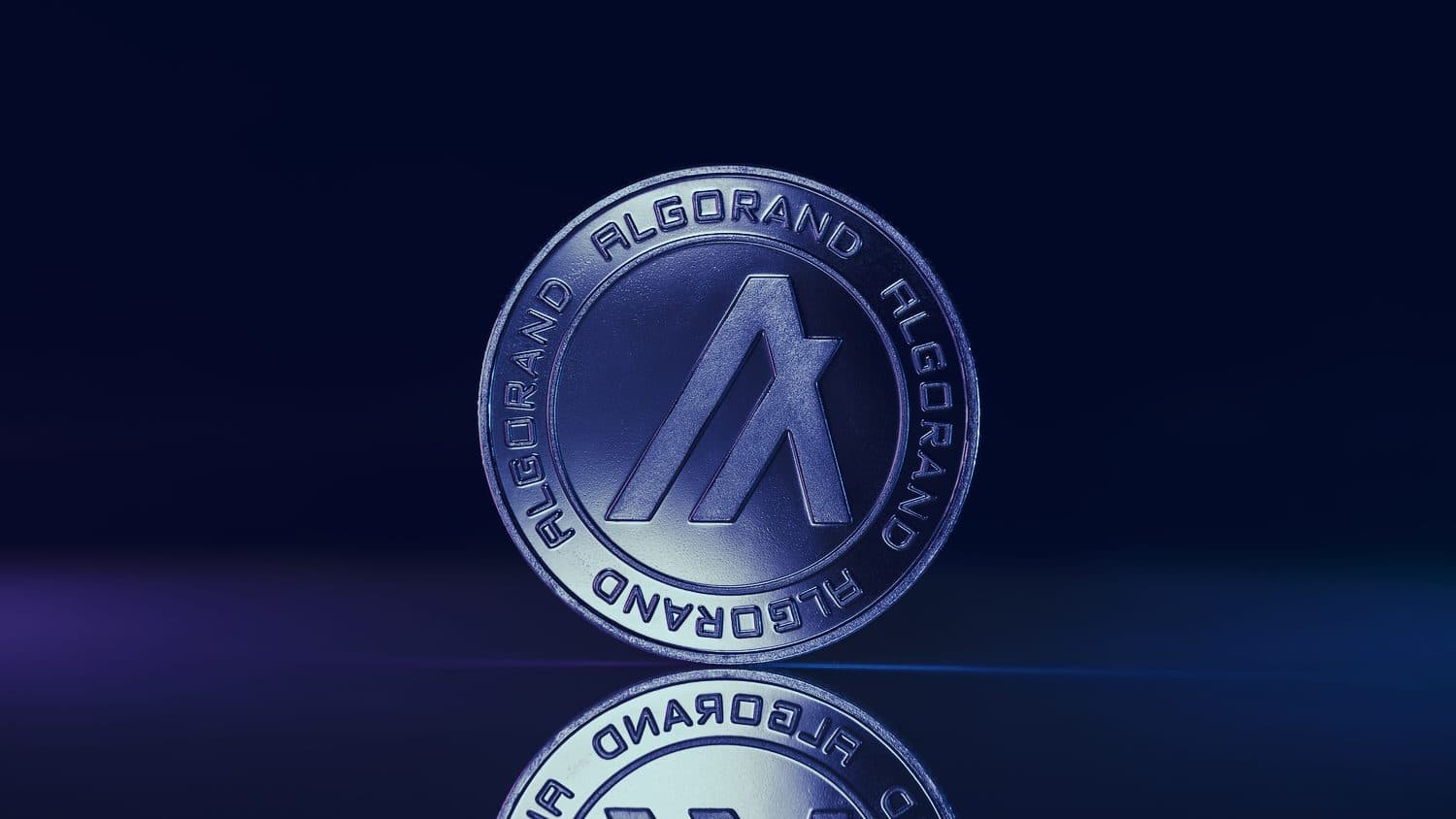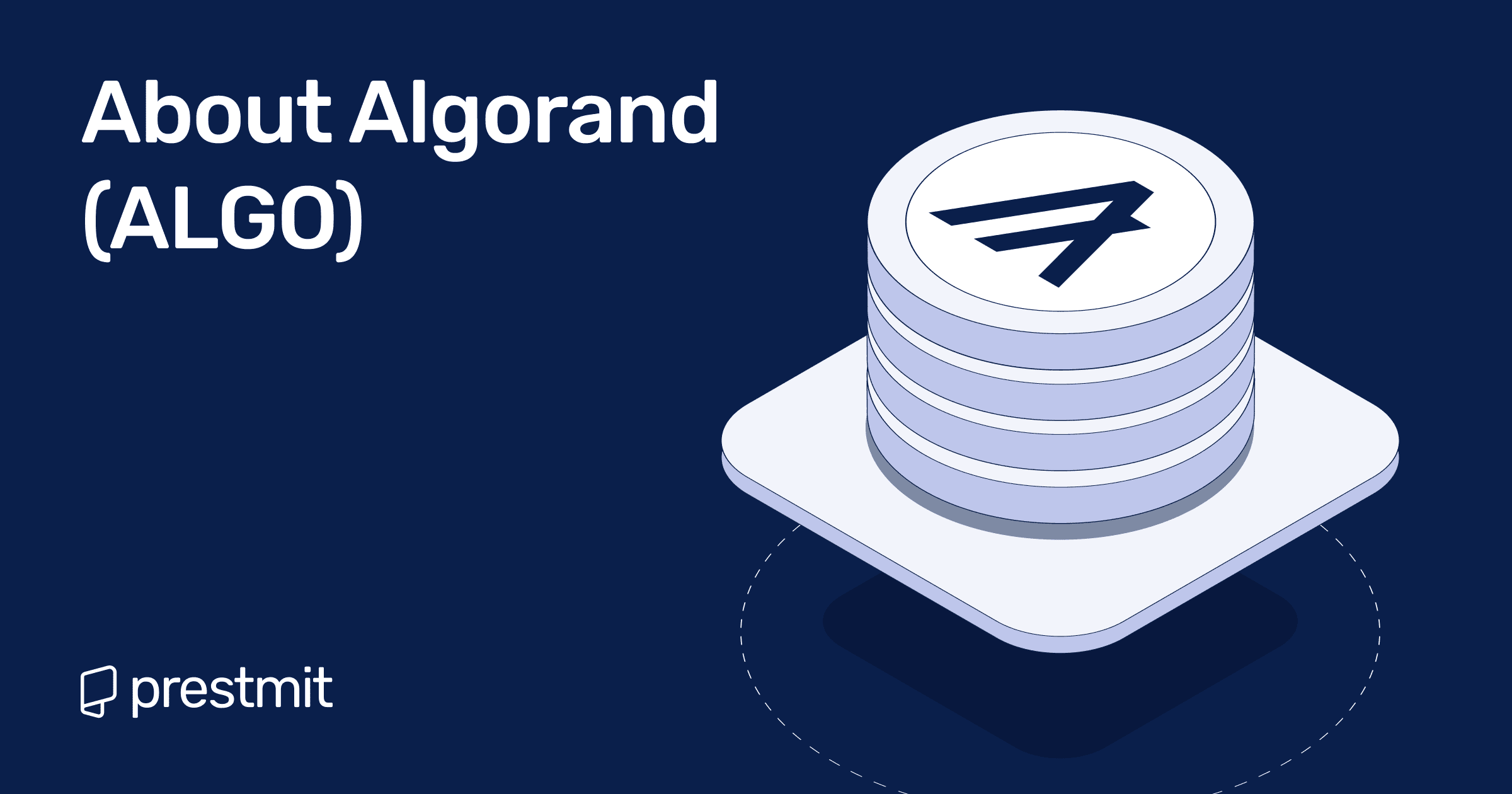Table of Contents
Blockchain has a contradiction: scalability, security, and decentralization do not usually come together. Most networks give up one for the others. Ethereum battles congestion, Bitcoin struggles with network congestion, and newer chains struggle with trust.
Algorand came to prove this unsolved issue wrong. Born in the academic fire of MIT, its architecture delivers a true fusion of speed, finality, and decentralization. Instead of fixing flaws, Algorand resets consensus itself. To understand why this network is getting global attention, one must study its conception, functionality, and groundbreaking use in finance, supply chains, and others.
What is the Origin of Algorand?

Algorand was established in 2017 by Silvio Micali, a Turing Award–awarded cryptographer at MIT. His concept was the result of the critical deficiency he perceived in early blockchain architectures: they were not scalable without sacrificing centralization.
In creating Algorand, Micali sought to create a public blockchain that would scale without sacrificing trust. Algorand Inc., based in Boston, designed the protocol, while the Algorand Foundation is tasked with governance and ecosystem growth. The origin myth is no startup story; it is a deliberate scholarly benchmark aimed at resolving blockchain’s trilemma for the better.
What is Algorand (ALGO)?
Algorand is a Layer-1 blockchain that runs on a new consensus protocol called Pure Proof-of-Stake (PPoS). ALGO, its native cryptocurrency, drives the platform to enable transaction fees, staking, and governance vote contribution.
Compared to Proof-of-Work chains, Algorand conserves energy with excellent transaction throughput—over 6,000 transactions per second with block finality in five seconds. Its architecture enables open participation: all holders of the token stand an equal opportunity to confirm transactions, facilitating an equitable and decentralized ecosystem.
How Algorand Works
Algorand’s architecture is founded on PPoS, which randomly selects validators based on their stake. The randomness prevents collusion and ensures equity. Its process entails:
| Step | Process | Key Advantage |
|---|---|---|
| 1 | Token holders propose blocks | Equal participation |
| 2 | A random committee validates | Fast consensus |
| 3 | Block finalization occurs | No forks, instant finality |
This method prevents wastage of computation seen in Proof-of-Work and minimizes centralization risks common in Delegated Proof-of-Stake networks. Algorand is constructed to be secure in an adversarial environment to be robust against malicious participants.
Features of Algorand
1. Scalability
Algorand is at the forefront of scalability with the ability to process thousands of transactions per second with near-zero fees. Unlike congested networks that slow up through overuse, Algorand’s Pure Proof-of-Stake consensus ensures seamless functioning without backlog. Such scalability supports mass adoption, processing anything from micropayments right through to enterprise use cases without compromise in either decentralization or performance.
2. Finality
In Algorand, transaction finality occurs in seconds, with irreversible and immediate settlement. Unlike chains that may be forked or require multiple confirmations, Algorand offers finality in a single step. This kind of benefit makes it ideal for financial institutions, trading platforms, and apps where speed and certainty are paramount. Clients can expect solid, definitive transactions at all times.
3. Sustainability
Algorand is planned as a carbon-free blockchain that consumes very little energy compared to traditional Proof-of-Work frameworks. It partners with climate organizations to offset its already low footprint, one of the most environmentally friendly blockchains currently available. This green alignment focus is in line with global ESG initiatives and should appeal to sustainable businesses and investors.
4. Decentralization
Algorand’s Pure Proof-of-Stake ensures every token holder an equal opportunity to participate in consensus. Through the avoidance of power centralization present in Delegated Proof-of-Stake or mining pools, Algorand keeps the equity of its platform intact. Such a level of decentralization facilitates security, transparency, and trust in the network in accordance with blockchain’s original principles.
5. Interoperability
Algorand was designed to seamlessly interoperate between blockchain worlds. Its structure allows for token bridges, asset tokenization, and cross-chain coordination. Tokens may be issued, digital assets may be transferred, and cross-chain functions may be supported with ease. This interoperability makes Algorand more valuable and positions it as a hub of financial innovation and business adoption in the broader Web3 space.
6. Smart Contracts
Algorand runs light-weight, Layer-1 smart contracts that offer speed, cost-efficiency, and stability. The contracts operate natively on the protocol, eliminating reliance on outside layers. Developers get assured fees and security guarantees while developing decentralized applications. From DeFi protocols to digital identity platforms, Algorand’s smart contracts drive innovation with minimal friction and maximum impact.
Uses of Algorand
1. Finance
Algorand is a low-fee instant-settlement layer for financial assets, and major stablecoins like USDC and USDT are natively built on Algorand, attesting to its presence in the world of finance. Having low latency, its design accommodates securities trading, cross-border payments, and tokenized assets, and is a solid foundation for institutional adoption of blockchain as well as finance in the modern era.
2. DeFi Ecosystem
Algorand powers decentralized finance through giving a reliable and scalable platform for lending, yield farming, and decentralized exchanges. Reduced transaction fees encourage participation while offering liquidity support. Investors and developers have a stable, carbon-neutral platform offering seamless operations without congestion in legacy networks such as Ethereum.
3. NFTs
Algorand provides a value-efficient and green platform to issue, trade, and hold NFTs. Creatives and businesses employ its blockchain to issue green digital assets without outrageous gas fees. By combining environmental responsibility with same-day finality, Algorand is an attractive NFT economy for creatives, collectors, and enterprises looking for scalable, long-term solutions in the digital asset economy.
4. Government Projects
Governments have embraced Algorand for central bank digital currencies (CBDCs) and innovation in the government sector. The Marshall Islands, for instance, launched its sovereign digital currency on the Algorand blockchain.
Its security, scalability, and efficiency make it a leading candidate for sovereign digital money, voter rolls, and other government-endorsed blockchain initiatives, including becoming a leader in national-scale adoption.
5. Supply Chain
Algorand protects supply chain networks with transparency, traceability, and immutability in international logistics. Businesses can log transactions, verify products, and support procurement on the Algorand distributed infrastructure. Its end-to-end finality and economic efficiency make it ideal for industries that require auditability, including pharmaceuticals and agriculture, where businesses can optimize trust and efficiency in operations.
Frequently Asked Questions (FAQs) About Algorand (ALGO)
How can I stake Algorand
Algorand staking is automated. Having ALGO within a supported wallet, such as Pera Wallet or exchanges like Coinbase, locks in rewards. There’s no locking or delegating tokens as on other chains—anyone can do it effortlessly.
Is Algorand a good investment?
Algorand’s fundamentals are good—scalable, fast, and institutional onboarding. Its investment thesis relies on market and ecosystem growth. As a long-term holder, it is compelling for investors seeking exposure to a viable blockchain with concrete utility.
What can you build on Algorand?
Algorand enables decentralized finance apps, NFTs, DAOs, and business use. Tokenized assets, payments infrastructure, and advanced smart contracts can be natively developed by developers on the protocol without bolted-on scaling.
Conclusion
Algorand is more than a blockchain experiment—it’s a rebellious knock against inefficiencies ravaging aging networks. With a seamless and refined combination of advanced cryptography and a simple, pragmatic vision for governance, Algorand demonstrates that scalability, decentralization, and sustainability are not competing visions. As a platform for financial innovation or an open development platform, it’s a force of foundation reimagining the future of blockchain.
Last updated on September 11, 2025

